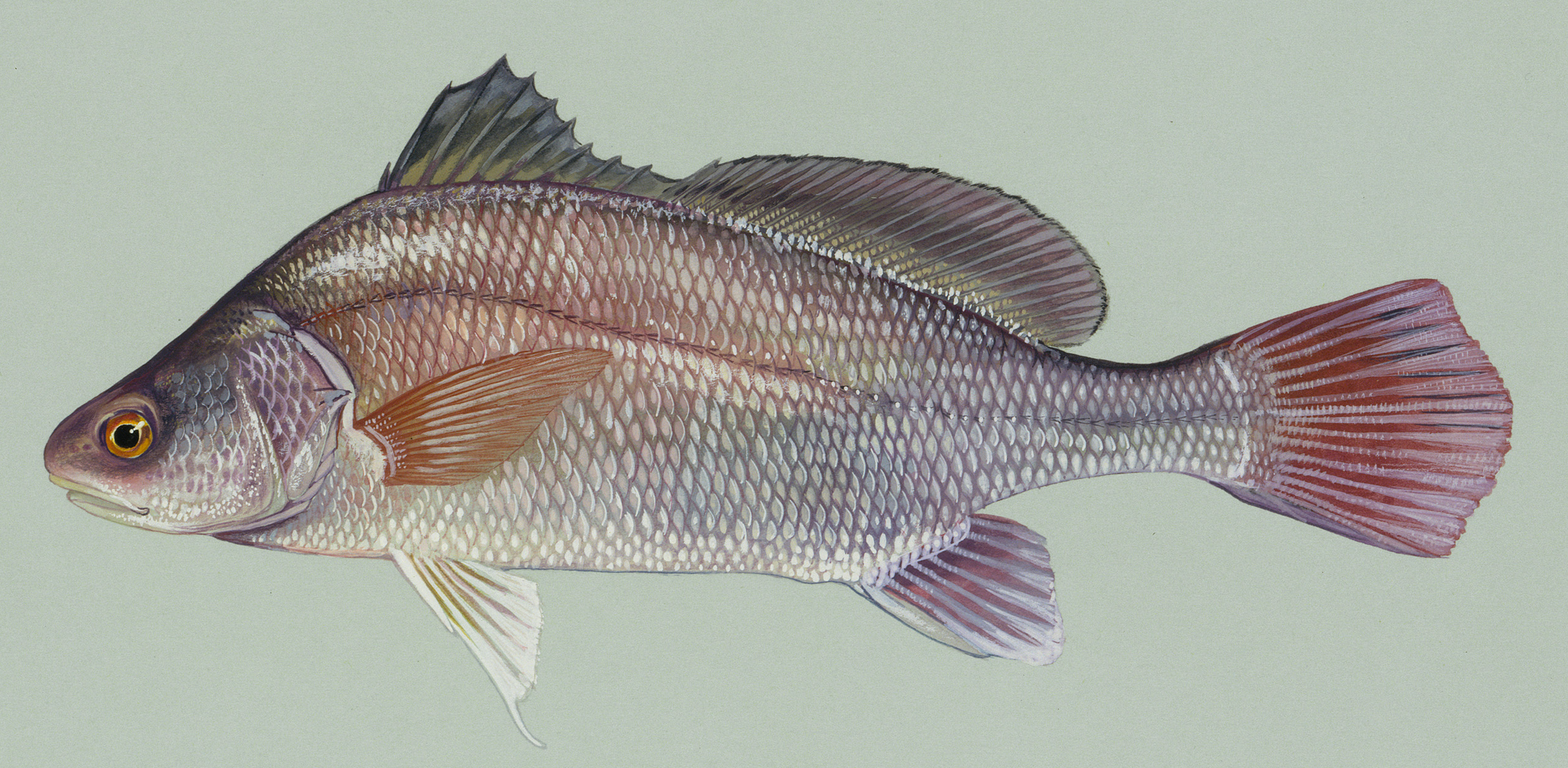Freshwater drum
(Aplodinotus grunniens)

Description
The freshwater drum, Aplodinotus grunniens, is a fish endemic to North and Central America. It is the only species in the genus Aplodinotus, and is a member of the family Sciaenidae. It is the only North American member of the group that inhabits freshwater for its entire life. Its generic name, Aplodinotus, comes from Greek meaning "single back", and the specific epithet, grunniens, comes from a Latin word meaning "grunting". It is given to it because of the grunting noise that mature males make. This noise comes from a special set of muscles within the body cavity that vibrate against the swim bladder. The purpose of the grunting is unknown, but due to it being present in only mature males and during the spawning season, it is assumed to be linked to spawning. The drum typically weighs 5–15 lb (2.3–6.8 kg). The world record was caught on Nickajack Lake in Tennessee, and weighed in at 54 lb 8 oz (24.7 kg). The freshwater drum is gray or silvery in turbid waters and more bronze or brown colored in clearer waters. It is a deep bodied fish with a divided dorsal fin consisting of 10 spines and 29–32 rays. The freshwater drum is also called Russell fish, shepherd's pie, gray bass, Gasper goo, Gaspergou, gou, grunt, grunter, grinder, wuss fish, gooble gobble, and croaker. It is commonly known as sheephead, and sunfish in parts of Canada, the United Kingdom, and the United States Freshwater drum are the only North American member of their family to exclusively inhabit freshwater (freshwater family members in genera Pachypops, Pachyurus, Petilipinnis and Plagioscion are from South America, while Boesemania is Asian). Their great distribution range goes as far north as the Hudson Bay, and reaches as far south as Guatemala. Their longitudinal distribution goes as far east as the eastern Appalachians and stretches as far west into Texas, Kansas, and Oklahoma. Freshwater drum are considered to be one of the most wide-ranging species in North America. The freshwater drum prefers clear water, but it is tolerant of turbid and murky water. They prefer the bottom to be clean sand and gravel substrates. The diet of the freshwater drum is generally benthic and composed of macroinvertebrates (mainly aquatic insect larvae and bivalve mussels), as well as small fish in certain ecosystems. Freshwater drum show distinct seasonal differences in their diet. In April and May, the drum feeds on dipterans.
Taxonomic tree:







